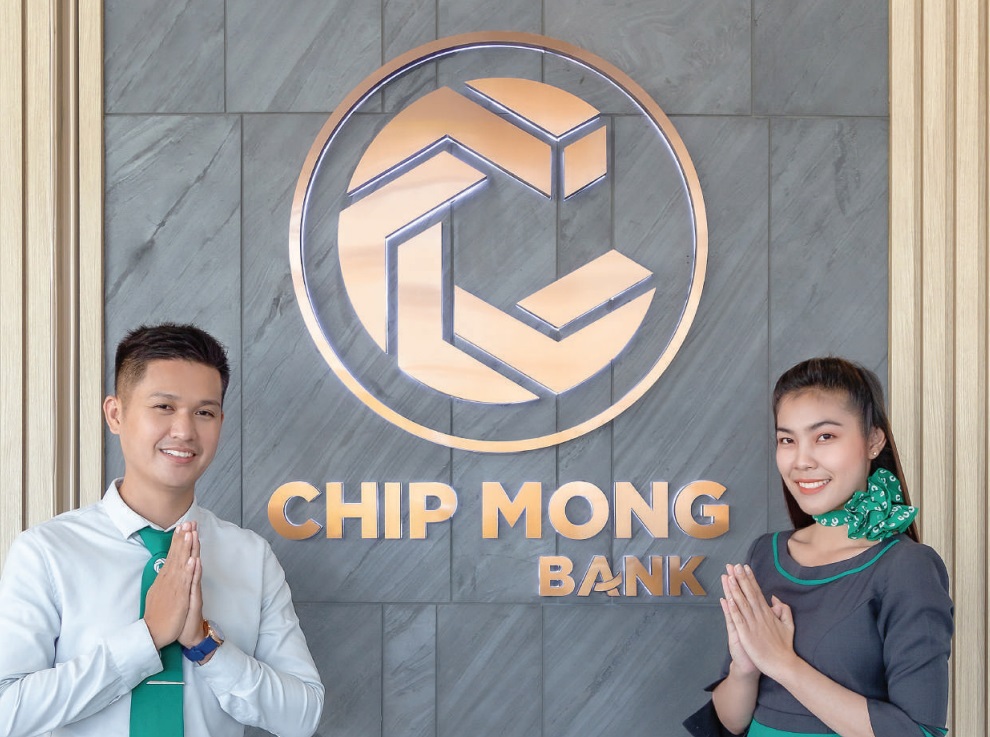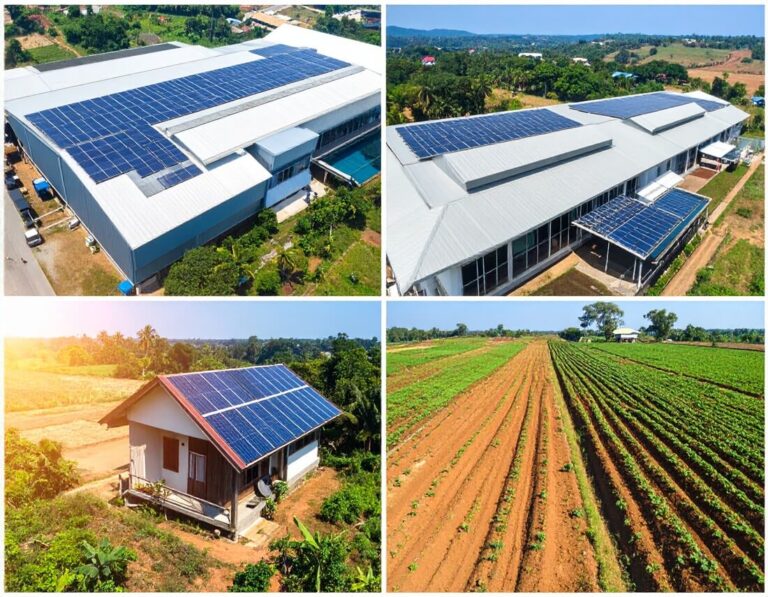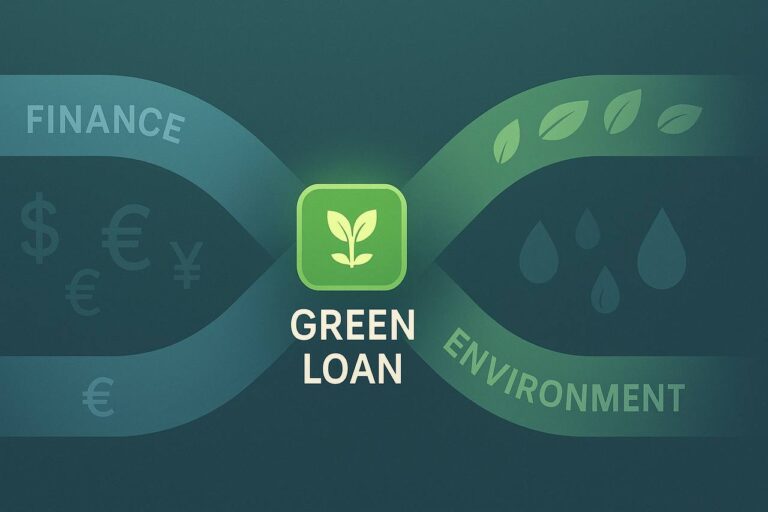Why Chip Mong Bank Is Poised to Champion Green Finance in Cambodia?

Cambodia, a nation undergoing dynamic economic transformation, stands at a pivotal moment. With ambitious goals for sustainable development and climate resilience, the kingdom increasingly recognizes that financial institutions hold a critical key to unlocking a greener future. This recognition fuels a rising demand for specialized “green loans” and “green finance” to channel vital investment into renewable energy, sustainable agriculture, and eco-friendly infrastructure. Indeed, achieving Cambodia’s climate goals could require a staggering $36 billion in investments by 2050, as highlighted by the World Bank-IFC.
In this evolving landscape, Chip Mong Bank has emerged as a formidable force. Despite its relatively young age, this rapidly growing and digitally savvy commercial bank, part of the colossal Chip Mong Group, possesses a unique set of strengths that position it exceptionally well to become a leading champion of green finance in Cambodia. This article will delve into why Chip Mong Bank is not just a burgeoning financial powerhouse but a prime candidate to lead Cambodia’s sustainable banking revolution.
Cambodia’s Green Finance Landscape: A Market Ripe for Growth
The push for a greener economy in Cambodia is palpable, driven by both national policy and global urgency. The government and the National Bank of Cambodia (NBC) are actively steering the financial sector towards sustainability. In January 2025, the NBC notably led the inaugural meeting of an inter-ministerial green finance working group aimed at drafting policies, strategies, and even a Cambodia Green Finance Taxonomy. This demonstrates a clear top-down commitment to integrating environmental considerations into financial decision-making.
The market’s readiness for renewable energy financing in Cambodia is evident. While established players like ACLEDA Bank and Canadia Bank have already introduced explicit “green loans” for solar installations, energy-efficient upgrades, and sustainable farming, the overall demand far outstrips current supply. Cambodia’s significant progress in SDG 7 (Affordable and Clean Energy), as noted in a June 2025 UN-backed report, further underscores the momentum for green initiatives. This underserved market presents a colossal opportunity for financial institutions willing to innovate and commit.
Chip Mong Bank’s Foundation for Green Leadership: More Than Just Assets
Chip Mong Bank’s potential in green finance is not merely speculative; it is built upon a robust and rapidly expanding foundation:
- Rapid Growth & Financial Strength: Since its founding in 2019, Chip Mong Bank has demonstrated an impressive trajectory. By the end of 2023, the bank had already surpassed USD 1.3 billion in total assets, with its loan portfolio reaching USD 712 million and customer deposits soaring to USD 1 billion. This substantial financial muscle provides the necessary capital and stability to venture into new, impactful areas like green financing.
- Digital-First Innovation: Chip Mong Bank isn’t just growing; it’s growing smart. Its unwavering emphasis on digital banking is evident in its award-winning mobile app, which has been recognized as the “Best New Digital Bank in Cambodia” and for its “Most Innovative Mobile Banking App.” This digital prowess is a game-changer for green finance. Digital platforms can enable efficient disbursement, seamless monitoring, and transparent reporting for specialized green loans, reaching a wider audience, including small businesses and individuals across the country, who might previously have had limited access to such financial products.
- The Power of the Chip Mong Group Ecosystem: Perhaps Chip Mong Bank’s most compelling differentiator is its deep integration within the vast Chip Mong Group. This diversified conglomerate is not merely a financial backer but a powerful ecosystem with established sustainability credentials:
- Chip Mong INSEE Cement, a flagship entity, has achieved a 20% reduction in CO2 emissions since its operations began and aims for a further 10% reduction by 2030 through fossil fuel substitution and clinker reduction. Their 10 MW solar installation at the cement plant and their industrial waste management solutions via Chip Mong Ecocycle (including co-processing plastic waste) are tangible examples of real-world environmental action.
- This inherent “green” ethos within the parent group provides a strong philosophical and practical foundation for Chip Mong Bank. It suggests a corporate culture that understands sustainability beyond mere compliance. Furthermore, the bank can leverage the group’s extensive network across construction, retail, property development, and consumer goods to identify and finance green projects, both within the group’s operations and for its vast network of partners and customers.
Bridging the Gap: How Chip Mong Bank Can Champion Green Finance
Given its unique advantages, Chip Mong Bank is strategically positioned to actively bridge the gap in Cambodia’s green finance market.
- Launching Dedicated Green Loan Products: The most direct step would be to introduce a comprehensive suite of explicitly branded “green loan” products. These could include:
- Renewable Energy Loans: Tailored financing for residential, commercial, and industrial rooftop solar installations, small-scale hydro projects, or bioenergy ventures.
- Energy Efficiency Loans: Designed for businesses and homeowners investing in energy-saving equipment, green building materials, or conducting energy audits.
- Sustainable Agriculture Loans: Supporting farmers in adopting climate-smart practices, efficient irrigation systems, or transitioning to organic farming.
- Green SME Loans: Specific financial packages for small and medium-sized enterprises developing eco-friendly products or services or adopting greener operational processes.
- Leveraging Digital for Green Impact: Chip Mong Bank’s digital leadership can be a force multiplier for green finance. Streamlined digital application processes, real-time tracking of loan utilization, and even the potential for digital platforms to report on the environmental impact of funded projects can enhance transparency and attract a wider pool of green investors. This digital accessibility is crucial for democratizing green finance across Cambodia.
- Strategic Partnerships and Capacity Building: To accelerate its entry, Chip Mong Bank could forge partnerships with global green finance leaders (like the IFC or ADB), green technology providers, and renewable energy developers. These collaborations could provide access to technical assistance, blended finance facilities, and vital knowledge transfer. Internally, investing in training for its loan officers to assess the environmental risks and opportunities of green projects would be paramount.
The Path Forward: Challenges and a Vision for a Greener Cambodia
While the opportunity for Chip Mong Bank in green finance is immense, the path is not without its challenges. Like any institution entering this nascent sector, it would need to navigate
- Defining “Green”: Ensuring clear alignment with evolving national and regional green finance taxonomies (like the upcoming Cambodia Green Finance Taxonomy being developed by the NBC) to avoid “greenwashing.”
- Risk Perception: Overcoming initial perceived higher risks associated with newer green technologies or unconventional business models.
- Awareness and Demand: Building awareness among potential borrowers about the benefits and availability of green financing.
However, Chip Mong Bank’s inherent strengths offer strategic advantages in overcoming these hurdles. Its robust financial standing provides a buffer for pioneering new products. Its digital agility allows for rapid adaptation and efficient market penetration. Most importantly, its association with the Chip Mong Group’s proven commitment to environmental sustainability provides an authentic foundation for its green finance ambitions.
By strategically embracing the green finance agenda, Chip Mong Bank stands to not only expand its market share and solidify its financial success but also to play a transformative role in guiding Cambodia towards a more resilient, low-carbon, and sustainable future. This is a chance to truly bank on a sustainable tomorrow.
What are your thoughts on how digital innovation can accelerate the adoption of green finance in Cambodia? Share your insights in the comments below!

FAQs: Chip Mong Bank and Cambodia’s Green Finance Future
1. Does Chip Mong Bank currently offer specific “green loan” products?
As of mid-2025, Chip Mong Bank’s public offerings do not explicitly feature branded “green loan” products like some other major Cambodian banks. However, this article highlights its significant potential and strategic position to enter and become a major player in this growing segment of Cambodia’s financial market.
2. What is “green finance” in the Cambodian context?
Green finance in Cambodia refers to financial products and services (like loans, investments, and bonds) that support environmentally sustainable projects and initiatives. This includes investments in renewable energy (solar, hydro), energy efficiency, green buildings, sustainable agriculture, waste management, and clean water projects, all aimed at fostering a greener, more resilient economy. The National Bank of Cambodia is actively developing a national Cambodia Green Finance Taxonomy to standardize what qualifies as “green.”
3. Why is green finance important for Cambodia?
Green finance is crucial for Cambodia to achieve its sustainable development goals and combat climate change. The country faces significant climate impacts and needs substantial investment (estimated at $36 billion by 2050) to transition to a low-carbon, climate-resilient economy. Green finance channels capital towards projects that reduce emissions, adapt to climate change, and protect natural resources.
4. What makes Chip Mong Bank “poised” to champion green finance if it doesn’t offer green loans yet?
Chip Mong Bank is exceptionally well-positioned due to its:
- Rapid Growth & Financial Strength: Its quick asset growth to over $1.3 billion provides a robust financial base.
- Digital Innovation: Its award-winning digital platforms can efficiently manage and disburse specialized green loans to a wider audience.
- Chip Mong Group’s Green Credentials: Its parent conglomerate has proven commitments to sustainability, with significant investments in solar energy (10 MW) and CO₂ reduction (20%) at Chip Mong INSEE Cement, indicating a strong existing “green” ethos and valuable internal expertise.
5. How is the National Bank of Cambodia (NBC) supporting green finance?
The NBC is actively promoting green finance. As of early 2025, it is leading an inter-ministerial working group to draft policies and strategies, including a Cambodia Green Finance Taxonomy. The NBC emphasizes integrating Environmental, Social, and Governance (ESG) principles and encourages financial institutions to offer products that support the green environment, aligning with Cambodia’s sustainable finance principles.
6. What types of green loans could Chip Mong Bank potentially offer in the future?
Based on market demand and industry trends, Chip Mong Bank could potentially offer:
- Loans for rooftop solar installations (residential and commercial).
- Financing for energy-efficient equipment and green building projects.
- Loans supporting sustainable agriculture practices.
- Specific financing solutions for green SMEs (small and medium-sized enterprises).



